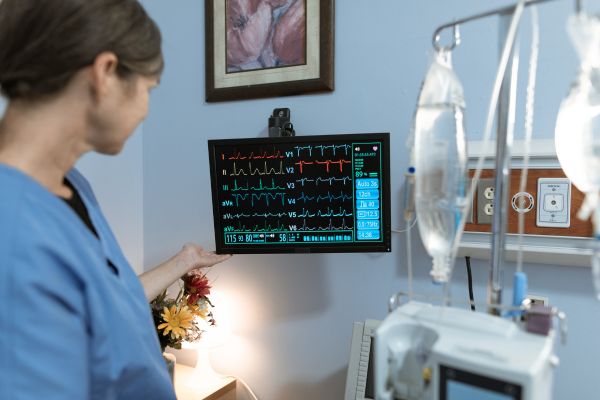Aged Care Homes Melbourne
Melbourne, a vibrant and culturally rich city, is home to a growing population of seniors who require specialized care as they age. With its diverse communities and world-class healthcare infrastructure, the city offers an extensive range of aged care homes, also referred to as residential aged care facilities or nursing homes. These homes provide essential support for elderly individuals who can no longer live independently due to physical, emotional, or cognitive challenges. The demand for high-quality aged care in Melbourne has surged in recent years, driven by an aging population and increased awareness of the importance of personalized care for seniors. This comprehensive guide explores the landscape of aged care homes in Melbourne, delving into the types of services offered, factors to consider when choosing a facility, costs, cultural considerations, and the future of aged care in the region. Whether you’re a family member seeking care for a loved one or an individual planning for your own future, this guide aims to provide valuable insights to help you navigate the world of aged care in Melbourne.
The Growing Need for Aged Care in Melbourne
Melbourne’s population is aging rapidly, mirroring global trends in developed nations. According to demographic data, the proportion of Victorians aged 65 and over is expected to double by 2050, placing significant pressure on the healthcare and aged care sectors. This demographic shift is driven by increased life expectancy, advancements in medical technology, and the aging of the baby boomer generation. As a result, the need for aged care homes in Melbourne has never been greater. Families are increasingly seeking facilities that offer not just basic care but also a high quality of life, with access to social activities, medical support, and environments that feel like home. The city’s diverse population also means that aged care homes must cater to a wide range of cultural, linguistic, and religious needs, ensuring that residents feel respected and understood in their care environment.
Types of Aged Care Homes in Melbourne
Aged care homes in Melbourne come in various forms, each designed to meet different levels of care needs and personal preferences. Understanding the types of facilities available is crucial for making an informed decision about the right care for yourself or a loved one. Broadly speaking, aged care homes can be categorized based on the level of care they provide, the ownership structure, and the specific services they offer. For instance, some homes focus on low-level care for residents who are still relatively independent but need assistance with daily tasks like bathing, dressing, or meal preparation. Others provide high-level care for individuals with complex medical conditions, such as advanced dementia or terminal illnesses, requiring 24-hour nursing support.
Another distinction lies in the ownership of these facilities. Many aged care homes in Melbourne are operated by not-for-profit organizations, often with ties to religious or community groups, such as the Salvation Army or Catholic organizations like Mercy Health. These homes tend to emphasize holistic care, focusing on emotional and spiritual well-being alongside physical health. Private aged care homes, on the other hand, often offer premium services, with luxurious accommodations and additional amenities like on-site salons, cafes, or gyms. Public sector aged care homes, managed by the Victorian Government, cater primarily to residents with limited financial means, ensuring that everyone has access to care regardless of their economic status.
Services Offered by Aged Care Homes in Melbourne
Aged care homes in Melbourne provide a wide array of services tailored to meet the diverse needs of their residents. At the core of these services is personal care, which includes assistance with daily activities such as eating, bathing, dressing, and mobility. Many homes also offer clinical care, delivered by registered nurses and allied health professionals like physiotherapists, speech therapists, and podiatrists. This ensures that residents with chronic conditions or complex health needs receive the medical attention they require without needing to leave the facility.
Beyond medical and personal care, aged care homes in Melbourne place a strong emphasis on lifestyle and well-being. Residents often have access to a range of activities designed to keep them physically active, mentally engaged, and socially connected. These activities might include art classes, music therapy, gardening groups, or outings to local attractions like the Royal Botanic Gardens or St Kilda Beach. Some facilities also offer intergenerational programs, partnering with local schools or daycare centers to bring children and seniors together, fostering meaningful connections across generations.
Specialized care is another key offering in many Melbourne aged care homes. Dementia care, for instance, is a priority for facilities like Homestyle Aged Care and Arcare, which provide secure environments and tailored programs for residents with memory loss. Palliative care services are also widely available, ensuring that residents with life-limiting illnesses receive compassionate end-of-life care that addresses their physical, emotional, and spiritual needs. Respite care, a short-term option for seniors needing temporary support, allows families to take a break from caregiving while ensuring their loved ones are well looked after.
How to Choose the Right Aged Care Home in Melbourne
Selecting the right aged care home in Melbourne can be a daunting task, given the number of options available and the emotional weight of the decision. Several factors should be considered to ensure the chosen facility aligns with the needs and preferences of the resident. Location is often a primary concern, as families typically prefer homes close to their own residences for ease of visiting. For example, inner-city options like Mercy Place East Melbourne or Rathdowne Place Aged Care offer proximity to the CBD, while suburban facilities like Baptcare Karana Community in Kew provide a quieter, more residential setting.
The level of care provided is another critical factor. Families should assess whether the facility can accommodate the resident’s current needs and any potential future requirements, such as increased medical support or dementia care. It’s also important to evaluate the staff-to-resident ratio and the qualifications of the care team. Facilities with 24/7 registered nurses, like those operated by Bupa Aged Care or Estia Health, can provide greater peace of mind for families of residents with complex health conditions.
The environment and culture of the home play a significant role in a resident’s quality of life. Many Melbourne aged care homes strive to create a “homely” atmosphere, with comfortable furnishings, private rooms, and communal spaces like gardens, courtyards, or dining areas. Visiting potential homes in person can give families a sense of whether the environment feels warm and welcoming. During these visits, it’s also helpful to observe how staff interact with residents and whether there’s a genuine sense of community.
Cultural and linguistic compatibility is particularly important in a multicultural city like Melbourne. Many aged care homes cater to specific communities, offering language support, culturally appropriate meals, and religious services. For example, Bethel Aged Care in Coburg North is popular with the local Italian community, while other homes provide programs tailored for Greek, Chinese, or Indigenous Australian residents. Ensuring that a facility respects and celebrates a resident’s cultural background can make a significant difference in their overall experience.
Costs and Funding for Aged Care Homes in Melbourne
Understanding the costs associated with aged care homes in Melbourne is essential for families planning for long-term care. The Australian Government subsidizes much of the cost of aged care through the Aged Care Funding Instrument (ACFI), which allocates funding based on a resident’s assessed care needs. However, residents are still required to contribute to their care and accommodation costs, which can vary widely depending on the facility and the resident’s financial situation.
There are three main types of fees associated with aged care homes in Melbourne: the basic daily fee, the means-tested care fee, and the accommodation payment. The basic daily fee, which covers living expenses like meals, laundry, and cleaning, is set by the government and applies to all residents. As of recent updates, this fee is approximately $63.82 per day, though it may be adjusted annually. The means-tested care fee depends on a resident’s income and assets, determined through an assessment by Services Australia or the Department of Veterans’ Affairs. Some residents may not need to pay this fee at all if their financial means fall below a certain threshold.
Accommodation payments can be the most significant cost, particularly for private or premium facilities. Residents may be asked to pay a Refundable Accommodation Deposit (RAD), a lump sum that is refunded when they leave the home, or a Daily Accommodation Payment (DAP), a rental-style fee. Some homes offer a combination of both. For example, a high-end facility in Melbourne’s inner suburbs might charge a RAD of $500,000 or more, while more affordable options in regional areas may have lower fees. The government provides assistance for those who cannot afford these costs, ensuring that no one is denied care due to financial constraints.
Families should also consider additional fees for extra services, such as premium dining options, private phone lines, or specialized therapies. Many aged care homes in Melbourne offer “extra service” status, which includes luxury amenities like larger rooms, gourmet meals, or on-site entertainment facilities. While these services enhance the resident’s experience, they come at an additional cost and should be factored into the overall budget.
Navigating the Aged Care System in Melbourne
The process of finding and entering an aged care home in Melbourne can feel overwhelming, but understanding the steps involved can make it more manageable. The journey typically begins with an assessment by an Aged Care Assessment Team (ACAT), a government-funded service that evaluates an individual’s care needs and determines their eligibility for residential aged care. This assessment can be arranged through My Aged Care, the Australian Government’s centralized aged care portal, by calling 1800 200 422 or visiting their website.
Once approved for residential aged care, individuals and their families can start researching potential homes. My Aged Care provides a “Find a Provider” tool that allows users to search for aged care homes in Melbourne based on location, services offered, and availability of places. It’s also possible to contact homes directly to inquire about vacancies and arrange tours. During this stage, families should prepare a list of questions to ask, covering topics like staff qualifications, daily routines, meal options, and emergency procedures.
After selecting a home and receiving an offer of admission, the next step involves completing paperwork, including a resident agreement that outlines the terms of care, fees, and services. It’s advisable to seek advice from a financial advisor or legal professional before signing, as the agreement can have long-term financial implications. Once the agreement is finalized, the transition process begins, which may include moving personal belongings into the resident’s room and meeting with the care team to discuss their needs and preferences.
Cultural Diversity in Melbourne’s Aged Care Homes
Melbourne’s multicultural population is one of its defining features, and this diversity is reflected in the city’s aged care homes. With significant communities from Italy, Greece, China, Vietnam, India, and many other countries, aged care providers in Melbourne strive to offer culturally sensitive care that honors residents’ backgrounds. This includes providing meals that align with cultural dietary preferences, such as halal, kosher, or vegetarian options, and celebrating cultural festivals like Lunar New Year, Diwali, or Greek Easter.
Language support is another critical aspect of culturally appropriate care. Many aged care homes employ bilingual staff or provide access to interpreters to ensure residents can communicate effectively with caregivers. For example, facilities like MACG’s Grand Cedar Aged Care in Ashwood have staff fluent in languages such as Mandarin and Italian, catering to the needs of their diverse resident base. Some homes also offer religious services, prayer rooms, or partnerships with local faith communities to support residents’ spiritual needs.
Cultural sensitivity extends to staff training as well. Leading aged care providers in Melbourne, such as Regis Aged Care and TLC Aged Care, invest in cultural competency programs to equip their teams with the skills to care for residents from varied backgrounds. This ensures that residents feel understood and respected, which is essential for their emotional well-being and sense of belonging.
Challenges Faced by Aged Care Homes in Melbourne
Despite the many strengths of Melbourne’s aged care sector, it faces several challenges that impact the quality and accessibility of care. One of the most significant issues is staffing shortages, a problem that has been exacerbated by the COVID-19 pandemic. The aged care workforce relies heavily on nurses, personal care assistants, and allied health professionals, but high turnover rates and burnout have made it difficult for facilities to maintain adequate staffing levels. This can lead to reduced quality of care and longer wait times for residents needing assistance.
Another challenge is the financial sustainability of aged care homes. While government funding helps cover the cost of care, many facilities struggle to balance their budgets, particularly not-for-profit and public sector homes. Rising operational costs, including staff wages, utilities, and medical supplies, can strain resources, leading some homes to increase fees or reduce services. For residents and families, this can result in higher out-of-pocket expenses or limited access to specialized care.
The aging infrastructure of some aged care homes in Melbourne is also a concern. Older facilities may lack the modern amenities and accessibility features needed to meet the needs of today’s seniors, such as wheelchair-friendly bathrooms, secure dementia units, or updated technology for telehealth consultations. While many homes are undergoing renovations or rebuilding, the process can be disruptive for residents and may not keep pace with demand.
Quality of care remains a critical issue as well. High-profile inquiries, such as the Royal Commission into Aged Care Quality and Safety, have highlighted instances of neglect, inadequate training, and poor management in some aged care homes across Australia, including Melbourne. While many facilities maintain high standards, these reports underscore the importance of thorough research and oversight when choosing a home.
Innovations and Trends in Melbourne’s Aged Care Sector
Despite these challenges, the aged care sector in Melbourne is undergoing a period of innovation and transformation, driven by technological advancements, policy reforms, and changing consumer expectations. One notable trend is the integration of technology into aged care homes. Facilities like TLC Aged Care have introduced smart sensors and wearable devices to monitor residents’ health in real time, alerting staff to potential issues like falls or changes in vital signs. Telehealth services have also become more common, allowing residents to consult with doctors or specialists without leaving the home, which is particularly beneficial for those in rural or outer suburban areas of Melbourne.
Another trend is the focus on person-centered care, an approach that prioritizes the individual needs and preferences of residents over a one-size-fits-all model. This philosophy is evident in homes like Embracia Aged Care, where residents are encouraged to maintain their independence through personalized activities and flexible daily routines. Person-centered care also extends to family involvement, with many homes offering regular meetings and updates to keep loved ones informed and engaged in the care process.
Sustainability is gaining traction in Melbourne’s aged care sector as well. Some facilities are adopting eco-friendly practices, such as solar power, energy-efficient lighting, and sustainable food sourcing, to reduce their environmental footprint. For example, Menarock LIFE Aged Care has implemented initiatives to minimize waste and promote recycling within its homes, aligning with broader community values around environmental responsibility.
Intergenerational programs are another innovative trend, bringing together seniors and younger generations to foster mutual understanding and companionship. Facilities like TLC Aged Care have co-located early learning centers within their homes, allowing children and residents to interact through shared activities like storytelling, crafts, or gardening. These programs not only enrich the lives of residents but also help combat social isolation, a common issue among the elderly.
The Role of Government and Regulation in Melbourne’s Aged Care Homes
The Australian Government plays a significant role in regulating and funding aged care homes in Melbourne, ensuring that facilities meet national quality standards and provide safe, high-quality care. The Aged Care Quality and Safety Commission oversees compliance, conducting regular audits and handling complaints from residents and families. Homes that fail to meet standards may face sanctions or loss of accreditation, which can impact their ability to operate.
Recent reforms, spurred by the Royal Commission into Aged Care Quality and Safety, have introduced stricter regulations and increased funding for the sector. For example, the government has committed to improving staff training, increasing transparency around fees, and enhancing support for dementia care. In Melbourne, these reforms have led to greater accountability among aged care providers, with many homes investing in staff development and infrastructure upgrades to comply with new standards.
The Victorian Government also contributes to the aged care landscape, particularly through its management of public sector residential aged care services (PSRACS). These facilities, often located in rural and regional areas around Melbourne, cater to low-income seniors and those with complex care needs. The state government works closely with federal authorities to ensure that these homes provide high-quality care while remaining accessible to all Victorians.
Support for Families Navigating Aged Care in Melbourne
For families, navigating the aged care system in Melbourne can be an emotional and logistical challenge. Fortunately, a range of support services and resources are available to help ease the process. My Aged Care, the government’s aged care portal, offers a wealth of information on finding and funding care, as well as a contact center for personalized assistance. Advocacy groups like Older Persons Advocacy Network (OPAN) provide free, independent support for seniors and their families, helping them understand their rights and resolve issues with aged care providers.
Many aged care homes in Melbourne also offer family support programs, such as counseling, support groups, and educational workshops. These programs aim to help families cope with the emotional aspects of transitioning a loved one into care and provide practical advice on topics like financial planning and legal considerations. For example, facilities like Mercy Health and Arcare host regular family meetings to ensure open communication and collaboration between staff and loved ones.
The Future of Aged Care Homes in Melbourne
Looking ahead, the future of aged care homes in Melbourne is likely to be shaped by a combination of demographic trends, technological advancements, and policy changes. As the population continues to age, demand for aged care services will grow, prompting providers to expand their offerings and innovate to meet diverse needs. This may include the development of more specialized facilities, such as homes dedicated to specific conditions like Parkinson’s disease or culturally tailored homes for minority communities.
Technology will play an increasingly important role in aged care, with innovations like artificial intelligence, robotics, and virtual reality enhancing the quality of care and resident experience. For instance, AI-powered tools could help predict health issues before they become serious, while VR programs might offer immersive experiences for residents with limited mobility, such as virtual tours of Melbourne’s landmarks or international destinations.
Policy reforms will also influence the sector, with a continued focus on improving quality, transparency, and accessibility. The Australian Government’s planned Support at Home program, set to roll out in the coming years, aims to provide more flexible care options, allowing seniors to remain in their own homes longer before transitioning to residential care. This shift could impact the demand for aged care homes in Melbourne, encouraging facilities to adapt their services to include more home care integration and respite options.
Conclusion
Aged care homes in Melbourne play a vital role in supporting the city’s aging population, offering a range of services designed to enhance the quality of life for seniors. From personal and medical care to social activities and cultural programs, these facilities strive to create environments where residents feel safe, respected, and engaged. Choosing the right home involves careful consideration of factors like location, care needs, cultural fit, and cost, but with the right research and support, families can find a facility that meets their loved one’s needs.
As the sector continues to evolve, Melbourne’s aged care homes are embracing innovation and person-centered care to meet the challenges of an aging population. Whether through advanced technology, intergenerational programs, or a stronger focus on sustainability, these facilities are working to ensure that seniors can live with dignity and purpose in their later years. For families embarking on the aged care journey, the wealth of options in Melbourne offers hope and opportunity to find a place where their loved ones can thrive.






